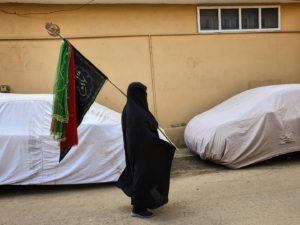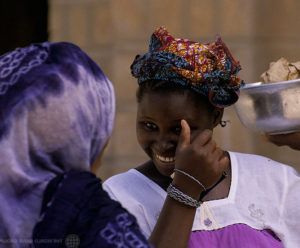In the latest CREID Working Paper, published earlier this month, CREID Director Mariz Tadros sets out why we need to look at the intersecting inequalities affecting women from religious minorities. In her paper, Dr Tadros puts forward five propositions on why the experiences of religious minority women are complex, unique, and need greater awareness and attention from those working in academia, human rights and global development.
Although people can have many identities that affect their status and role in society, the latest CREID paper, entitled Invisible Targets of Hatred: Socioeconomically Excluded Women from Religious Minority Backgrounds, highlights how, when women are poor and belong to religious minorities in settings where religious ‘otherisation’ is prevalent, they experience power and/or powerlessness in unique ways which need to be better understood by anyone with an interest human rights and/or development.
Dr Tadros makes it clear that the intention of the paper is not to create a hierarchy of those who suffer the most – the paper does not argue that poor, religiously marginalised women suffer the most. Instead, she wants to make the case for the recognition of their targeting, and where relevant, to challenge the claims that such targeting is exclusively on the basis of their gender, ethnicity, class, or even geographic location.
Spanning Egypt, Iraq, Myanmar, Nigeria and Pakistan, amongst other countries, the CREID Working Paper looks at five key areas of concern which have emerged from our research:
- Intersecting vulnerabilities: a closer look at women who are poor and belong to religious minorities in settings where religious ‘otherisation’ is prevalent
- Political pawns: how the bodies of women who belong to religious minorities are used as battlegrounds in political and geostrategic struggles
- Ideologically motivated sexual grooming of girls and women: a more difficult to detect, pernicious form of targeting that often initially does not involve the overt use of force.
- Gender hierarchies within: responses from within the community to all forms of sexual violence and how communities’ engagement with issues of gender equality influence minority women’s trajectories
- The law as an instrument of subjugation: the legal arena as a site of direct and indirect disproportionate harm to women who belong to religious minorities, in particular those who happen to suffer from multiple economic and social vulnerabilities.
A closer look at ideologically motivated sexual grooming
In last month’s CREID podcast, Dr Tadros had already highlighted the newly uncovered phenomenon of ideologically motivated sexual grooming, where young women from minority religious communities are being targeted, abducted, sexually assaulted, forcibly converted and forced into marriage. The case of the Pakistani Christian teenager Saneha Iqbal is a recent and disquieting example of this phenomenon, and the wider issue is being discussed this week at an event hosted by Lord Alton, entitled The Disappearing Women and Girls: Abducted, Forcibly Converted, Forcibly Married and Abused, at which Dr Tadros will be presenting.
The five areas are very much starting points and there are still many gaps to address. For example, When it comes to ideologically motivated sexual grooming, there is a severe deficit in our understanding of how it occurs. How do sexual predators win the trust of these women? How do the women and girls manage to keep it secret from their families?
In the next phase of CREID research, we will engage with women who are situated within these complex power dynamics to understand their perspectives, interpretive lens, and the ways of representing subjectivities in relation to different interlocutors. This will be carried out by women who are from these communities and whose own positionality is one that is considered, in the eyes of the women themselves, legitimate. In view of the substantial diversity in each of the different contexts in which CREID works, the intention is to understand the dynamics at hand rather than to arrive at common denominators.


